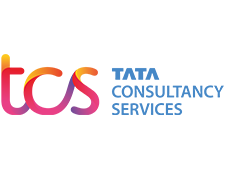STANBIC BANK ZIMBABWE: Zimbabwe’s Best Bank Keeps the Customer Right at the Centre
Standard Bank commenced operations on the African continent in South Africa, in 1862, taking the famous brand and all its expertise over to Zimbabwe in 1992. The recently decorated institution has just enjoyed a roaring success of a tobacco season, and, like many across the group, harnessed the power of digitisation to ensure that both existing and previously-unbanked customers alike were financially empowered through even the worst of the pandemic.
The Standard Bank Group is the runaway leader banking and financial services group in Africa, and in Zimbabwe, Stanbic Bank has branches in Harare, Bulawayo, Gweru, Kwekwe, Mutare, Chegutu, Ngezi, and Victoria Falls.
Guided and inspired by the group’s vision of remaining the leading financial services organisation in, for and across Africa, delivering exceptional client experiences and superior value, Stanbic Bank Zimbabwe, “is committed to making a real difference to financial services in Zimbabwe by providing banking services and products that enhance customer experience,” the institution states.
COMPETITIVE EDGE
Stanbic Bank CE Solomon Nyanhongo opens with some key background to the business’s standing in the country. “Stanbic in Zimbabwe is renowned for being one of the strategically key banks in the country,” he says, “classified as a systemically important institution given the number of customers who bank with us and our command of around 20% of the total market share.
“We are well represented in the country and have branches in around 16 locations, which affords us a sizeable coverage in the market,” Nyanhongo adds. “Anywhere where there is business activity of significance occurring, you will find us there ready to be of service.
“When it comes to foreign currency business, we also have the largest share of trades in the market – close to 40% of the entirety.” Clearly an uncommonly dominant position, we ask the CE to condense some of the competitive advantage which has propelled Stanbic Bank to the lofty heights it enjoys today.
“First and foremost, we have very specialised units, or centres of excellence, staffed by subject matter experts across all the various key sectors in which we operate,” he offers. “As such, we have a desk which caters for all of the mines and other business comprising our mining interest, and the same for energy, and these operate according to global standards.
“This makes our solutions to the various foreign currency conundrums in the country consistently practical, specialised and fit for purpose; simply put, they deliver.”
Stanbic Bank’s receipt of the prestigious Best Bank in Zimbabwe award at the 2020 iteration of the African Banking Awards only cements its position at the forefront of the banking sector. As adjudged by EMEA Finance, it follows an almost identical accolade collected last year, from leading financial magazine The Banker, continual recognition testament to its firm status as customers’ financial partner of choice.
TOP IN TOBACCO
Tobacco production in Zimbabwe is a huge industry, this year realising to growth of 16.8% in volume and 31% in value over 2020. This was due primarily to abundant rainfall. The lucrative crop is also a major source of foreign exchange for the nation, with sales reaching $800 million in 2021. It is a vital component of the agricultural sector in Zimbabwe and contributes some 12% of the GDP.
It is a major aspect of Stanbic Bank Zimbabwe’s business and brand, Nyanhongo clarifies. “We are a very big player in the tobacco industry and we command close to 50% of the market share, in terms of the lines of credit which we mobilise for the buying and selling of tobacco in the local market.
“It is also a key foreign currency earner, both for Zimbabwe and for us as a bank. Agriculture is one of our real fortes in the country.” Stanbic Bank is by far the biggest of the financial investment players in Zimbabwe’s thriving tobacco industry, whose value is pointed out by Stanbic Bank’s Executive Director and Head of Wholesale Banking, Betty Murambadoro.
“USD$405m offshore and USD$20m onshore tobacco facilities are currently being enjoyed by the main tobacco merchants and primary producers linked to the major tobacco merchants and their value chains,” she delineates. “Tobacco production is a key component of the agricultural sector in Zimbabwe and contributes 12% of the GDP.”
To fully capitalise in March this year, with the selling season looming, Stanbic Bank set up nine remote branches, or implants, at tobacco auction floors throughout the country to enable ease of access to funds for tobacco farmers.
“The implants are seasonal and are set to go a long way in improving operational efficiencies as the country grapples with the relentless Covid-19 which has led to the decentralisation of tobacco auction floors,” said Murambadoro, as this solution ensured the continued service of tobacco farmers’ banking needs countrywide.
While it might be difficult to exactly replicate the success that Stanbic Bank has encountered in the tobacco industry, the business does have its sights set on novel sectors and product types, Nyanhongo explains: “There is certainly scope for growing our agricultural side and spreading our reach to different crops,” he explains. “We do have a strategic interest in grains, like wheat and maize, where we can expand into these areas and partner with growers to enhance their credit strength and ability to connect with larger corporates.
“Agriculture therefore presents an abundance of opportunity, but likewise energy is an area of real interest for us, and renewables in particular. To date we have mainly financed hydro electricity generation for the national power producer. More and more in the country, however, the government has been encouraging the participation of private players in initiatives like solar power plants, which we can finance, and we see ourselves participating in this, too, on a large scale.”
DIGITAL PROVES CRITICAL
It was a move mirrored across the Standard Bank group, but Stanbic Bank’s digital push at the height of the pandemic was arguably the most comprehensive and considered. “It went hand-in-hand with our efforts to enable our staff to work from home,” Nyanhongo says, “as we also sought to enable our customers to transact with us remotely.
“We have come up with products like contactless cards, helping to make payments hygienic and fast, and have invested heavily to stabilise our IT platforms, and to enhance our online banking options and platforms for our customers. Everything is possible at home, 24-7, across the vast majority of our service offering.”
Stanbic Bank Zimbabwe also opted to shift the cost of accessing a range of its digital banking platforms from the customer to the bank. Zero-rating its website, Stanbic app, online banking and the SlydePay app, it was a move designed to allow customers access to key services as conveniently as possible, while encouraging uptake of digital banking platforms.
“Customer centricity is of utmost importance to our business and in keeping with this key pillar, we have seen it fit to ensure that our customers are able to access essential services on our digital banking platforms at no data costs,” commented Stanbic Bank Head of Client Solutions, Tich Zuze.
Recognising that, even today, digital is not universal, Nyanhongo also describes how the needs of those unable, or indeed unwilling to embrace its dawn are met. “Our ATMs have been operational and functioning like never before,” he adds, “strategically distributed across the country for customers not wishing to transact with electronic money. We have kept some physical branches open, as well, and our business continuation plan is alive and well with back-up teams to get any branches that do have to quarantine up and running within 48 hours.
“Our aim is to ensure that no customer is left out,” he summates, “and that they are all made to feel important and receive continuous service, whether or not they are able to make the jump to digital services.”
The customer first approach is one that Nyanhongo initiates right from the top of Stanbic Bank, and feeds through the entire organisation. It might just prove to be its key differentiator as it further distances itself from the competition in the country. “Our customers are right at the centre of what we do,” he wraps up. “We are planning and growing together with them.
“Moving forward, our priority is to deliver to our customers best in class service, which is unparalleled in the rest of the market. We will continue to invest heavily in understanding our clients, in technology and in an environment conducive to retaining the best talent as we strive to remain the best bank for all our stakeholders.
“We want to be more than a bank to our customers,” Nyanhongo emphasises. “We want to offer a one-stop solution, 360-degree service provision catering for every financial need.”




